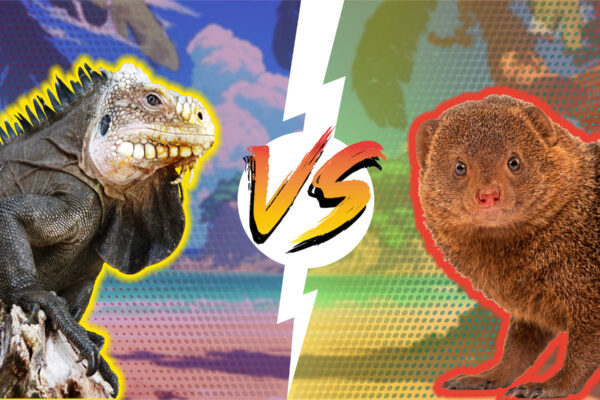Loss of Reptiles Poses Threat for Small Islands Where Humans May Have Caused Extinctions
A new examination of ancient and current species of reptiles conducted by a University of Texas at Austin paleobiologist reveals the serious impact of the disappearance of even a few species of reptiles in some island areas.
 AUSTIN, Texas — A new examination of ancient and current species of reptiles conducted by a University of Texas at Austin paleobiologist reveals the serious impact of the disappearance of even a few species of reptiles in some island areas. The study, published in the Proceedings of the National Academy of Sciences, has startling conclusions about how, on smaller islands in the Caribbean where human impact was greatest, extinctions have led to the loss of up to two-thirds of the supports for the ecosystem that native reptile species once provided there.
AUSTIN, Texas — A new examination of ancient and current species of reptiles conducted by a University of Texas at Austin paleobiologist reveals the serious impact of the disappearance of even a few species of reptiles in some island areas. The study, published in the Proceedings of the National Academy of Sciences, has startling conclusions about how, on smaller islands in the Caribbean where human impact was greatest, extinctions have led to the loss of up to two-thirds of the supports for the ecosystem that native reptile species once provided there.
Although similar studies have looked at the role of large mammals or other types of animals in ecosystems over time, this is the first to do so with reptiles—a key component of many island ecosystems.
Exploring what’s known as functional diversity, the study goes beyond cataloging different living things in a place over time, in this case, 418 Caribbean reptile species. Instead, the study maps out the functions that those species offer that support a thriving natural environment. The 418 species can be collapsed into 123 functional entities: groupings of species that share the same suite of traits and may perform similar ecosystem services.
“Functional diversity is a really important measure of the health of an ecosystem,” said Melissa Kemp, an assistant professor of integrative biology at UT Austin. “It’s important to understand the number of species in a given system, but it’s equally, if not more, important to understand the roles those species play. That’s the measure of functional diversity.”
For example, when the giant tortoises of the Caribbean were hunted to extinction, the island region lost not only the tortoises but a core service the reptiles provided. Giant tortoises are important vehicles to spread plant seeds. That function was lost in the Caribbean, and the situation was made worse by the extinction of other large-bodied herbivores such as sloths, leading to certain plants having limited dispersal agents and restricted ranges.
Species introduced by humans also contribute to shifts in functional diversity over time, with sometimes mixed results. One of the clearcut invasive species villains of the study is the mongoose. The small weasel-like mammal preys on reptiles and was brought to the islands by European colonizers.
“In the historical record, you can see when Europeans arrived and the mongoose was introduced, reptile species disappeared on these islands,” Kemp said.
However, the opposite was true when green iguanas were introduced to islands that had lost reptile-related functional diversity. The green iguana filled the gaps. In fact, the species helped return functional diversity to prehistoric levels in some cases.
“While the green iguana is functionally similar to some of the native iguanas, there is concern about how it interacts with native iguanas and its long-term impacts on functional diversity,” Kemp said. “In some places where they co-occur, the invasive green iguanas are interbreeding with native iguanas.”
Kemp found that smaller islands, in particular, lack the buffer that larger islands have when they lose a set of reptile species that help to keep an ecosystem intact to an event like the introduction of the mongoose. For example, the largest islands, Cuba, Jamaica, Hispaniola and Puerto Rico, retain 80%–98% of their native functional entities. The study found that smaller islands that had limited human impact retained much of their functional diversity, too: Mona and Sombrero, two islands that are no longer inhabited, were used for limited mining after European colonization but had no large-scale agriculture, dense human population or mongoose introduced and retain 75% of their native functional entities.
The islands of the Caribbean are some of the most biodiverse places on Earth, home to delicate ecosystems and teeming with species that exist nowhere else on the planet. Without functional diversity that includes various reptiles, however, more ecosystems are susceptible to collapse, making the topic a vital one for conservation.
“It’s becoming readily apparent that we’re not going to be able to save every single species. Some are already extinct or functionally extinct in the wild,” Kemp said. “Trying to conserve the functions that organisms provide to an ecosystem might be a bigger focus moving forward.”
Funding for the research was provided by the National Science Foundation.
Publication: Melissa E. Kemp, et al., Defaunation and species introductions alter long-term functional trait diversity in insular reptiles, PNAS (2023). DOI: 10.1073/pnas.2201944119
Original Story Source: University of Texas

 Alerts Sign-up
Alerts Sign-up